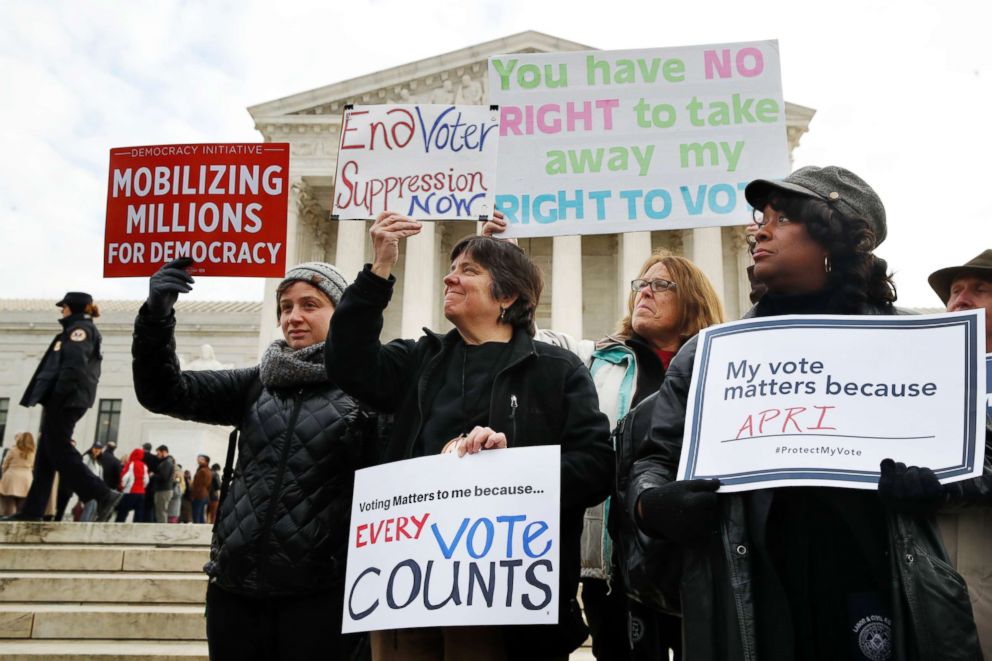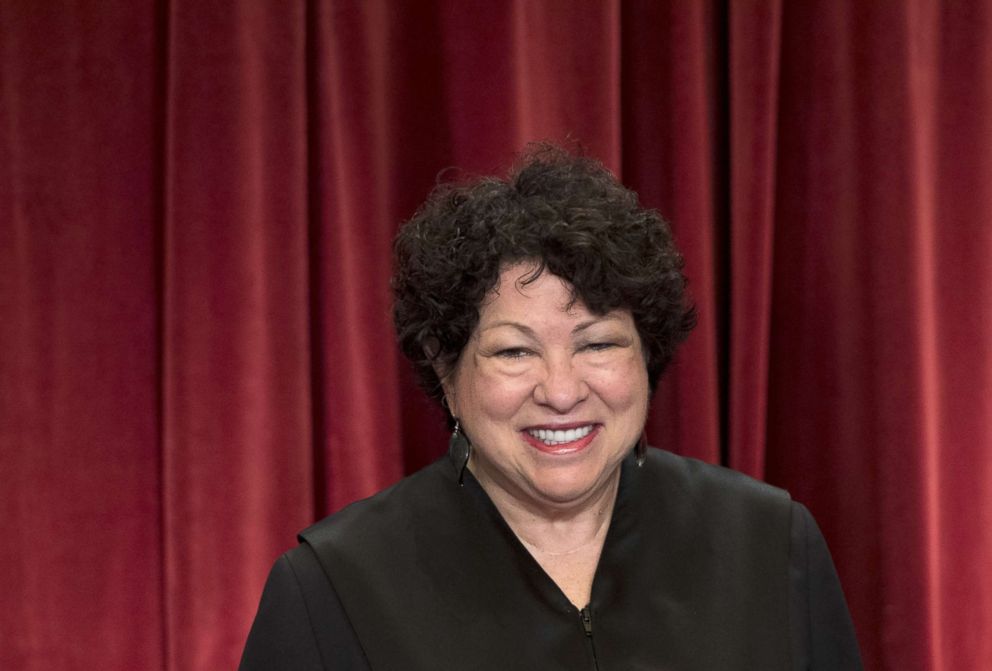Supreme Court hears arguments on Ohio voter-purge practices
The Supreme Court is to decide the legality of Ohio's voter-purge process.
— -- The Supreme Court on Wednesday heard oral arguments on whether the State of Ohio's process of removing individuals from voter rolls violates federal law.
The case before the court, Husted v A. Philip Randolph Institute, questions the legality of an Ohio law that allows the removal of individuals from voting rolls if that individual has not voted in two federal elections and have not responded to a confirmation notice or update their registration.
Paul Smith, lawyer for the respondent, argued that federal guidelines in both the National Voter Registration Act and the Help America Vote Act prohibit states from removing individuals from voter rolls for failure to vote.
"Just as you have a right to vote you have a right not to vote,” he told the justices.

But Ohio State Solicitor Eric Murphy reminded the court that individuals who didn’t vote in two election cycles were also sent a notice that had to be signed and returned.
"So long as we send individuals a notice and so long as we wait two federal elections before we remove them, that that is acceptable," Murphy said.
Justice Sonia Sotomayor voiced concern that Ohio’s purge process disenfranchises certain citizens, telling Murphy, “You're reading is that the failure to vote is enough evidence to suggest that someone has moved. That seems to be your position because it can be the only one. But is that a reasonable effort to draw that conclusion when you do results in disenfranchising disproportionately certain cities where large groups of minorities live, where large groups of homeless people live?”

Sotomayor suggested could Ohio use other ways of verifying a change of address, “like the post office or certified mail or motor vehicle change of address yet you're suggesting that using a failure to appear at an election or elections as evidence of moving when people have a right not to vote if they choose.”
Chief Judge John Roberts seemed to give some weight to Ohio’s argument that failure to vote is not the only criterion for removal.
Roberts asked Smith to explain why in some situations a notification is enough.
"In some situations you think the notification is sufficient, so you would say in those, it is not just the failure to vote," Roberts said. "But in this case, you say the notification is not sufficient, so it is just the failure to vote?”
Justice Anthony Kennedy, the court’s swing vote, seemed to understand why a process was needed, saying, “The reason they're purging them is they want to protect the voter roll from people that have not -- that -- that have moved and they're voting in the wrong district.” But wanted to know if the "best tools" were being used.
The court is expected to issue an opinion by the end of June.